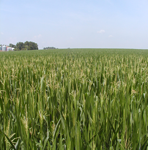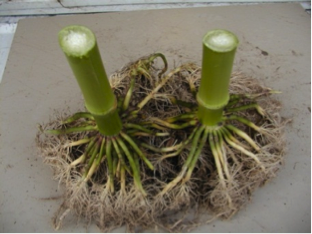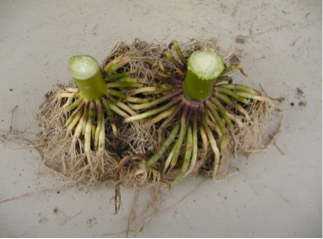Plant Positive Products
Significant Yield Increase for an investment of 5/acre
fertilizer boosters
good reasons to consider their use

The use of fertilizers in agriculture is an accepted and adopted practice by nearly all producers. They have a proven record of enhancing yields and increasing profits. Scientists have identified at least 17 essential elements that are necessary for plant growth, 14 of which come from the soil (the others come from water and oxygen). Repeated harvesting of crops on a plot of land depletes the soil of those essential growth elements. Agricultural fertilizers work by replenishing the soil with the nutrients necessary for productive plant growth.
So why would a grower need fertilizer boosters? The answer is that fertilizer boosters (cationic exchange stimulants) work in the plant itself to make more effective and efficient use of the added nutrients provided by fertilizers, thus reducing the amount of fertilizer required to achieve optimum yields. Less input costs with the same yield results in more profitability.
How Fertilizer Boosters Work
BioWash treated roots are......
Roots not treated show..........
The above photographs illustrate the effectiveness of an application of BioWash in the furrow on the root system of corn. The treated plants have a vigorous network and more expansive absorption area to uptake nutrients. Cationic exchange stimulants actually improve the absorption ability of the plant by helping it to more efficiently process nutrients and water. This accelerated uptake of nutrients means the plant's roots, stalks, and leaves are strengthened. A healthy plant resists disease, promoting higher quality and yields. Growers are finding they actually save money by utilizing good fertilizer boosters like BioWash in two ways. First, they can keep their current level of fertilization, but use it more efficiently or actually reduce the application rate. Either way, there is an associated economic benefit. This vibrant root system is a result of a process called cationic exchange. CE is a process that stimulates the electromagnetic exchange between a plant's roots and nutrient ions of the soil. In soil science, cation-exchange capacity (CEC) is the maximum quantity of total cations, of any class, that a soil is capable of holding, at a given pH value. Most producers will notice that CEC is one of the analyses reported on a soil test report that is used as a diagnostic tool in assessing fertilizer requirements.
To view in .pdf format: fertilizerbooster.pdf